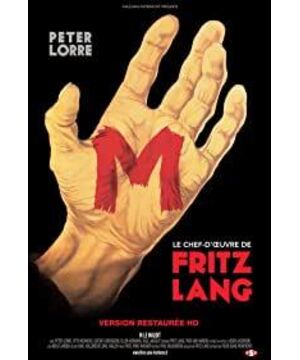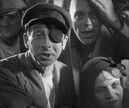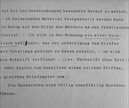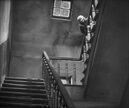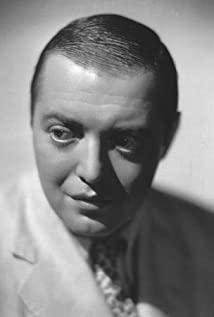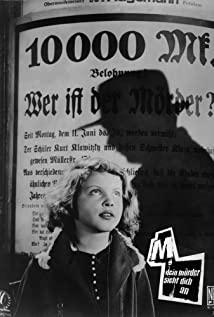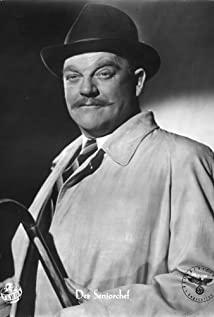The film "M" (also known as "The Cursable Man") has the right to be the most beloved work by author Fritz Lange. It is the first aesthetic reference not long after the advent of sound films, and is a microcosm of pre-Nazi German history. It is a commercially successful film, an undoubted classic in film history, a repertoire of Western film clubs, a "compulsory course" for film studies, and a turning point in Lange’s artistic career. masterpiece. In order to read the film "M", one needs to understand the German society in the 1930s and the author's ideology, that is, the general text (context) of the film.
The defeat of the Second Empire in the 1918 war led to violent social unrest: the rampant right-wing forces, the suppression of the Spartak movement, the general crisis of capitalism in 1929: inflation, bank failures, industrial shutdowns, and sudden increase in unemployment The conflict with society is sharp. The film truly describes the real life in Berlin, reflects the angry and desperate mental state of the German public, and shows the incompetence of state institutions and the activities of criminal groups. It can be called a unique portrayal of German society and German spirit on the eve of fascist usurpation.
In the creation of Fritz Lange, films depicting murderers occupy a considerable proportion. Why are you interested in murderers? He replied: "Civilization may make people tame, curb the desire for destruction, and serve the interests of society. However, there is still a barbaric nature among most of us, which is enough to make us whim, act vicious, and lawless. It hurts people. The desire to kill and the desire to kill are closely related to sexual desire. In these impulses of desire, people do not act rationally. Our sense of disgust itself is a proof of a potential sense of anxiety, because we worry that everyone may become a murderer. Murderer, worry that once the barrier created by the civilization of centuries collapses, everyone may become such a person." The dual nature of man is the eternal theme of Lange, and it is the same as the German dual soul embodied in Faust. The tradition coincides with each other. In the 1920s, the demonic middle-class civilians that Hoffman was keen to describe had dual personalities, and the unobtrusive "ordinary people" in "M" also had dual personalities. Fritz Lange described the pity and even sympathy shown by the murderer when he was interrogated by the leader of the thieves, which may be a manifestation of this ideology.
In order to make this film, he studied various murders that were widely reported in the newspapers at the time, especially the murderer nicknamed "Düsseldorf Vampire", and even served as a criminal consultant at the police station in Alexanderplatz to understand in detail. Police procedures. At the same time, he also discussed with psychoanalysts and talked with the "Three Educations and Nine Streams" to let them perform on stage. The theme of the gang of thieves is derived from Brecht’s "The Three Cents Opera" and real-life literature: photos and newspaper articles describe the real situation of the gang of thieves serving the police.
The film was originally called "The Murderer Among Us", but the producer was afraid of Hitler's victory in the election and was banned because of the title, so the film title was changed to "M", which included "murderer" and "cursable man" Two levels of meaning. From June 9, 1932, the film was screened in Ufa Cinema for four weeks before being pushed to the whole country. The film has experienced three climaxes (in the United States in 1932, 1935, Germany and France from 1960 to 1961), as well as the film of the same name produced by the Columbia company directed by Joseph Lose in 1959 and adapted from the Lange script (story background Moved to Los Angeles, USA) constituted the fate of this film.
Interpreting this film in accordance with the analysis principles of this article requires grasping its unique structure based on the form of triple alternating rhetoric. This structural format dominates the narrative process of the first four-fifths of the film, and constitutes three different clues: M's trajectory for finding new victims, the police station detection process, the reaction of the bandit group, and the spontaneous search. The third clue is the most ornamental and dramatic part of the film. This dramatic choice constitutes a unique expression of the film, which has a news sensation effect and a passionate effect that the documentary literature lacks. The triple alternation pattern ends at the end of the film: the bandit gang catches the murderer, thus canceling the decomposition space and forming the basic basis for alternation.
The narrative paragraphs of the film can be divided as follows: or based on the location change, the 491 shots of the whole film can be decomposed into 73 narrative units according to the sub-shot structure, or 9 overall structures can be distinguished based on the change of the plot. The former belongs to low-segment decomposition, and the latter belongs to high-segment decomposition. Taking the prologue as an example, the total number of shots is 26, and 10 units can be distinguished on the basis of alternate spatial changes. If the analysis is based on the type of paragraph arrangement, the entire prologue constitutes a unit.
The nine major parts of the film include the murder of Arthur Buckman (shots 2 to 27), the fear that permeates the city (shots 28 to 54), the busyness and incompetence of the police station (shots 55 to 132), bandit gangs and the police Separate actions (cameras 133 to 180), simultaneous investigations (cameras 181 to 224), the investigation was completed (cameras 225 to 269), surrounded the building and captured M (cameras 270 to 356), and the police found the whereabouts of the murderer (Lens 357 to 414) and the final interrogation (Lens 415 to 491).
Through the analysis of the overall structure of the film, this story can be summarized in one sentence: The whole city is looking for mental patients-murderers. The subjects here are people with different identities, including thieves and police. You can also, like the theorist Noel Birch, regard the film as an extension of the original "subject-cell" expression, that is, "an unfamiliar murderer appears intermittently, causing fear in the whole city, and then gradually Determine his whereabouts until a face-to-face confrontation with others". This passage emphasizes the way the play is arranged and shows the relevant characteristics of the narrative process: the protagonist of the film transitions from unknown, invisible and intermittent appearance to well-known, identity confirmation and continuous appearance.
The three lines of motion that determine the film’s strong theatrical frame run through the nine major parts of the film. The first movement line from the second part to the fourth part describes the fear caused by the murderous tragedy, the incompetence of the police and the unrest in Berlin's non-mainstream society. The second line of motion includes the fifth and sixth parts, from paragraphs 10 to 18. This is the core of the film's plot. The end of this movement line is that M's identity is recognized and M is forced to hide in the building. The third line of motion includes the seventh and eighth parts, that is, paragraphs 19 to 24. The three forces finally converge: the police, the gang of thieves, and the murderer.
However, the above three lines of motion are not uncommon in narratives. If the film only unfolds this dramatic pattern flatly, there will be no strength, no modernity and originality. The unique characteristics of the film "M" come from two sets of motivational principles of this article. The first principle concerns the development of the film from discontinuity to continuity as a whole. This principle has been established in the film's prologue: the alternation of two different spaces between mother and daughter. Later, the alternate appearance of the police and the murderer was the main manifestation of this principle. Alternating montage and voice-over is the basic rhetoric to realize this principle.
The second principle involves the progressive revealing of the central character (the murderer) of the film. M's seven appearances constitute another set of motivational principles of the film. M's seven appearances are not only one of the leading factors in the formation of discontinuity, but also a gradual development. M’s seven appearances include the shadows and voice-overs in the film’s prologue, close-up shots of writing letters to the newspaper while smoking, looking at the distorted facial shots of the little girl’s shadow in the glass window, staring at the little girl’s whistling shot, in Encountered a third little girl, M was whistling to buy her fruit and sugar, and was discovered by the blind, and Henry was overtaken by Henry on the back with an "M" mark on the back and looked panicked. She hid on the top floor like a beast. In the shadows, I tried my best to open the fence door and the iron lock and the pursuer staggered in panic when he broke in. The long-shot passage hitting a big clock, facing the angry crowd in the temporary "court", biting his fingers, arguing desperately, and pitifully. The scene of kneeling down and begging for mercy. M is finally revealed. After appearing for the fifth time, he is no longer the subject of viewing, but the object of viewing under the eyes of others, a helpless and helpless worm, and a target to be pursued. This constitutes a turning point in the gradual process.
The rigorous analysis of this article does not exclude the study of characters and themes.
In this film, there are two opposing types of characters: murderer M and collective characters (victim, police station, bandit, tramp, people in the city). The character that the author strives to portray is of course M. According to the text of the film, the murderer can be known from different angles.
He is the "bad guy" in the nursery rhymes: He holds a small axe and can chop the little girl to pieces. However, he was still a child in several ways: his chubby appearance, habitual movements, neurotic behavior, the habit of wiping his mouth, the appearance of sucking sugar and gnawing apples. He looks strange in the mirror, stands in front of the shop window and feels self-pity, showing the full narcissism and obvious love of lips emphasized by psychoanalytic theory. This is a kind of regression (or return) to childhood.
He is a sadist. He has killed eight children since the beginning of the film. However, in terms of appearance, he is a kind and gentle citizen: balloons and candies for the little girl.
He is a terror-making vampire, who first made his mother lose peace, but he also evoked the maternal instinct of all mothers, so when the "lawyer" in the "court" defended him, a prostitute also stood up and scolded M for death. God's crime.
He is a villain who disrupts social activities and destroys social peace. He makes the police station helpless. However, he is not a criminal with "conventional" motives. He does not belong to the liars, pickpockets, thieves and murderers who understand the "rules of the game" in society. Commit a class. The author uttered the usual language of the Nazis through the mouth of the thief’s head: "...We are not the same as this man who was hunted by the police! We do this kind of business to survive. This demon has no right to live, he should disappear, and he should not be merciless. Get rid of him..." This treatment alludes to the initial activities of the German Nazis and all underground organizations that are prepared to replace legal rights with narrow self-interest.
He is a lone murderer, but he is also an intermediary that brings together two opposing social forces (police and thieves): law and illegality, upper and lower levels. The overhead and overhead systems show this relationship. M made the two social forces deviate from their own routines, and made the thieves gangs imitate the upper class to establish their own courts and exchanges.
He is a paranoid schizophrenic patient. On the one hand, he is a self-enclosed social "outcast", which can be felt from his appearance, clothing, gait, behavior and survival trajectory. The strong sexual repression makes his "libido" (sexuality) only It is a morbid destructive power to cause death. However, on the other hand, his schizophrenia and claustrophobia does not rule out episodes with paranoid characteristics. The film shows this characteristic through three aspects: murder desire and provocation desire (I wrote an anonymous letter to the newspaper, but wrote it in red pen. His own nickname "M") and a pleasurable technique based on calling for sympathy (a remark made during the interrogation).
He is a "centripetal" "self-whole", he is the focus that shakes the various forces in Berlin society before the Nazis came to power, but he is also a converter: the various social forces that gather around him spread through him and beyond him. In the social space, recombination is the "centrifugal" aspect.
In short, the analysis of characters in this article is also multi-level and multi-faceted.
The value of the film is also reflected in its style. Lange has mastered the methods and limitations of sound movies. He refused to use "atmospheric" music and only used expressive sound effects (such as Grieg's music played by a murderer, and the breath of the murderer's hiding place. Wait). In his films, expressionism and realism are treated in a balanced way: not only maintaining the expressionistic characteristics of the image (for example, the murderer is introduced into a derelict building like a safe), expressive montage and possessing Symbolic objects (balloons, little Arthur's empty chair, empty stairs) make these objects closely related to the situation, and the depiction of life details is true to the truth. Peter Laurie, who starred in the murderer, was a drama actor who was trained by Brecht and became famous for starring in this role. His unique melancholy, lonely, and trance-eyed performance was well received.
View more about M reviews


